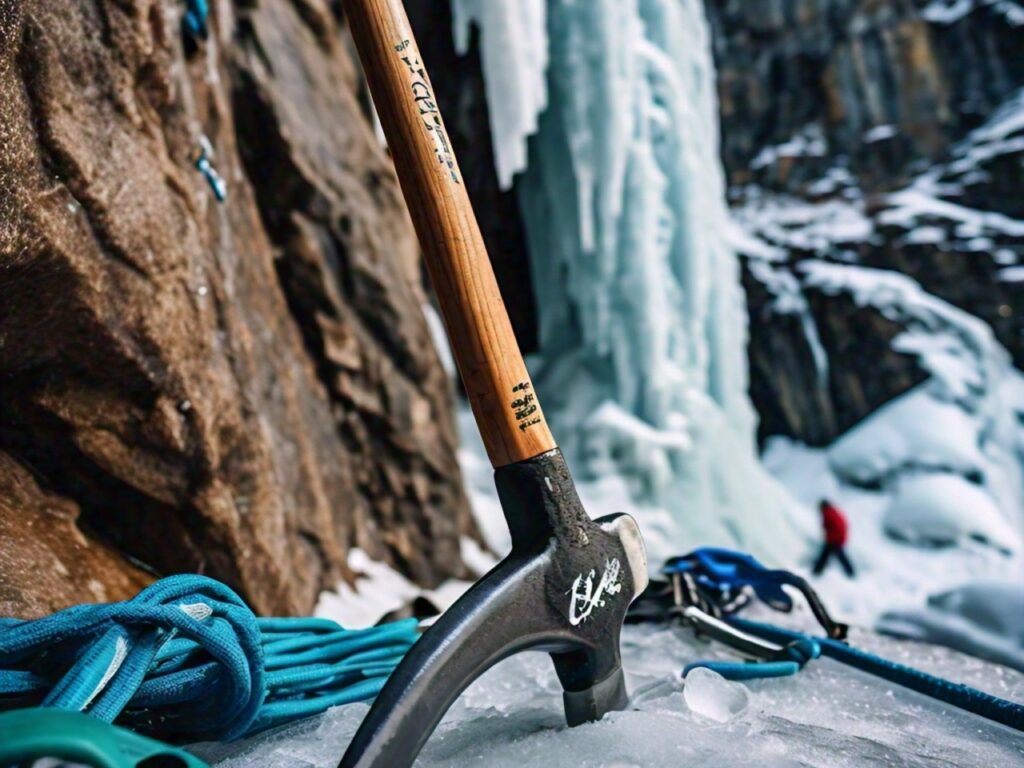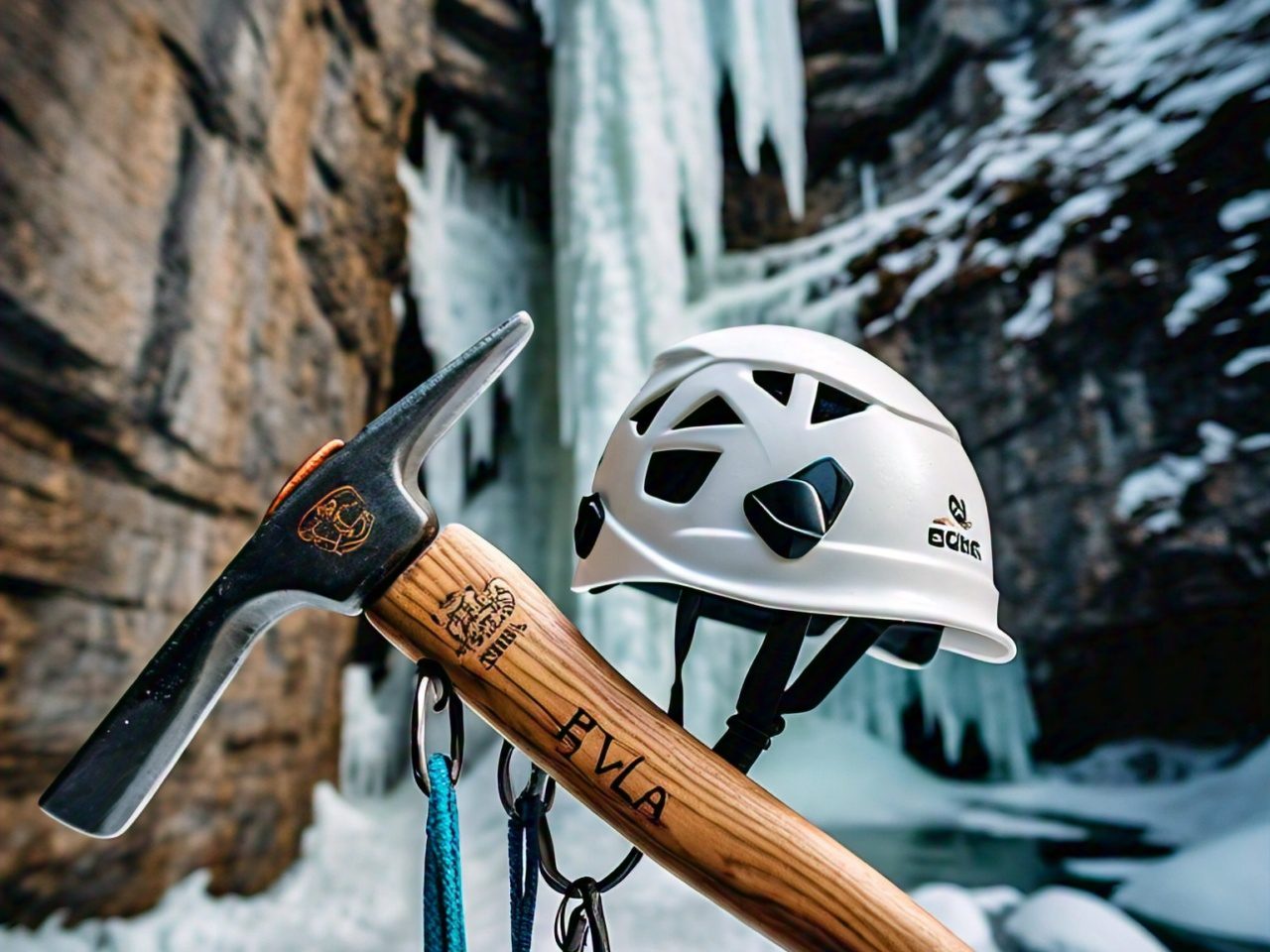
Ice Climbing Ax: A Comprehensive Guide
Ice climbing is an exciting and challenging sport that requires specialized equipment. One of the most essential tools for ice climbers is the ice climbing ax. This guide will delve into the various aspects of the ice climbing ax, its importance, types, and how to choose the right one. Whether you’re a beginner or an experienced climber, understanding your equipment is crucial for a safe and successful climb.
Key Takeaways
- Essential Tool: The ice climbing ax is a crucial piece of equipment for ice climbers.
- Types: There are different types of ice climbing axes, each suited for specific types of climbing.
- Selection: Choosing the right ice climbing ax depends on several factors, including the type of climb and personal preference.
- Maintenance: Proper care and maintenance of your ice climbing ax ensure its longevity and safety.
Understanding the Ice Climbing Ax
What is an Ice Climbing Ax?
An ice climbing ax, also known as an ice tool, is a specialized tool used by climbers to ascend ice formations such as frozen waterfalls and glaciers. It is designed to provide grip and support on icy surfaces, enabling climbers to move safely and efficiently.
An ice climbing ax is a climber’s best friend when navigating through challenging ice terrains.
Key Components of an Ice Climbing Ax
- Head: The head of the ax has a sharp pick for penetrating ice and a hammer or adze for clearing holds.
- Shaft: The shaft is typically made of lightweight yet durable materials like aluminum or carbon fiber.
- Grip: The grip provides a secure hold and often includes a leash to prevent the ax from falling if dropped.
Types of Ice Climbing Axes
Ice climbing axes come in various types, each designed for different climbing scenarios:
- Technical Ice Axes: Used for steep ice climbing and mixed routes, these axes have a curved shaft and a modular head.
- Mountaineering Axes: These are longer and straighter, ideal for general mountaineering and glacier travel.
- Hybrid Axes: Combining features of both technical and mountaineering axes, these are versatile for various climbing conditions.
A good ice climbing ax can make a significant difference in the climber’s performance and safety.
Types of Ice Climbing Axes
| Type | Description | Best For |
|---|---|---|
| Technical | Curved shaft, modular head | Steep ice climbing, mixed routes |
| Mountaineering | Long, straight shaft | General mountaineering, glacier travel |
| Hybrid | Combines features of both technical and mountaineering axes | Versatile climbing conditions |
Choosing the Right Ice Climbing Ax
Selecting the right ice climbing ax depends on several factors. Here are some considerations to keep in mind:
Climbing Style
- Technical Climbing: Requires a technical ice ax with a curved shaft for better swing and grip on vertical ice.
- Mountaineering: A longer, straight-shafted ax is suitable for self-arrest and traversing glaciers.
Length and Weight
- Length: The ax should reach your ankle when held by the head with your arm relaxed.
- Weight: Lighter axes are easier to handle but ensure they are durable enough for your climbing needs.
Material and Construction
- Shaft Material: Common materials include aluminum and carbon fiber for their balance of weight and strength.
- Head Material: Steel is preferred for its durability and ice penetration capability.

How to Use an Ice Climbing Ax
Using an ice climbing ax effectively requires proper technique and practice.
Basic Techniques
- Swinging the Ax: Aim for a solid placement by swinging the ax into the ice with controlled force.
- Self-Arrest: Learn to use the ax to stop a fall by driving the pick into the ice while positioning your body correctly.
A climber’s skill in using the ice climbing ax can greatly enhance their safety and efficiency on the ice.
Choosing the Right Ax
| Factor | Consideration | Importance |
|---|---|---|
| Climbing Style | Technical or general mountaineering | Determines type of ax |
| Length | Should reach your ankle when held by the head | Affects usability and comfort |
| Weight | Balance between lightness and durability | Influences handling |
| Material | Aluminum or carbon fiber shaft; steel head | Durability and performance |
Maintaining Your Ice Climbing Ax
Proper maintenance of your ice climbing ax ensures it remains effective and safe to use.
Cleaning and Storage
- After Use: Clean the ax with warm water and dry it thoroughly to prevent rust.
- Storage: Store the ax in a cool, dry place, away from moisture and direct sunlight.
Sharpening the Pick
- Regular Inspection: Check the pick for dullness or damage and sharpen it as needed using a file or specialized tool.
Safety Tips for Using an Ice Climbing Ax
Safety is paramount in ice climbing. Here are some tips to ensure you use your ice climbing ax safely:
- Proper Training: Take courses or train with experienced climbers to learn proper techniques.
- Wear Appropriate Gear: Always use a helmet, gloves, and other protective gear.
- Check Equipment: Regularly inspect your ax and other climbing gear for wear and tear.
A well-maintained ice climbing ax and proper safety measures can prevent accidents and injuries.
Conclusion
The ice climbing ax is an indispensable tool for ice climbers, offering support and stability on icy surfaces. By understanding its components, types, and proper usage, climbers can enhance their performance and safety. Remember to choose the right ax for your climbing style, maintain it regularly, and practice safe climbing techniques.
What are ice climbing axes called?
Ice climbing axes are called ice tools.
Is an ice axe necessary?
Yes, an ice axe is necessary for safety and stability in ice climbing and mountaineering.
What are the three types of axes?
The three types of axes are splitting axes, felling axes, and broad axes.
Should you sharpen an ice axe?
Yes, sharpening an ice axe is important for maintaining its effectiveness and safety.